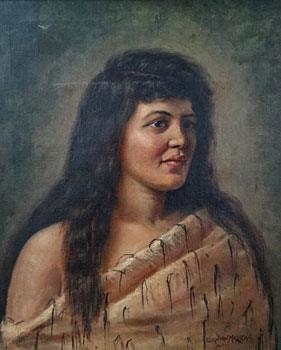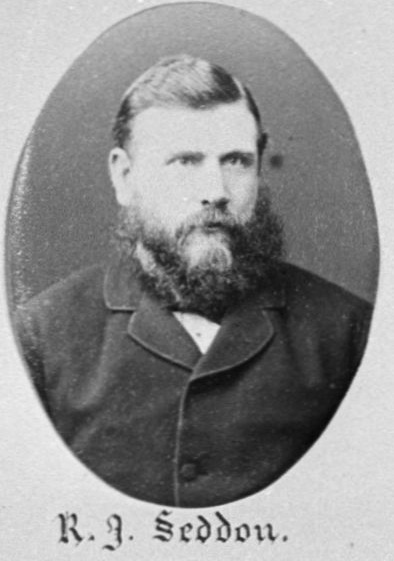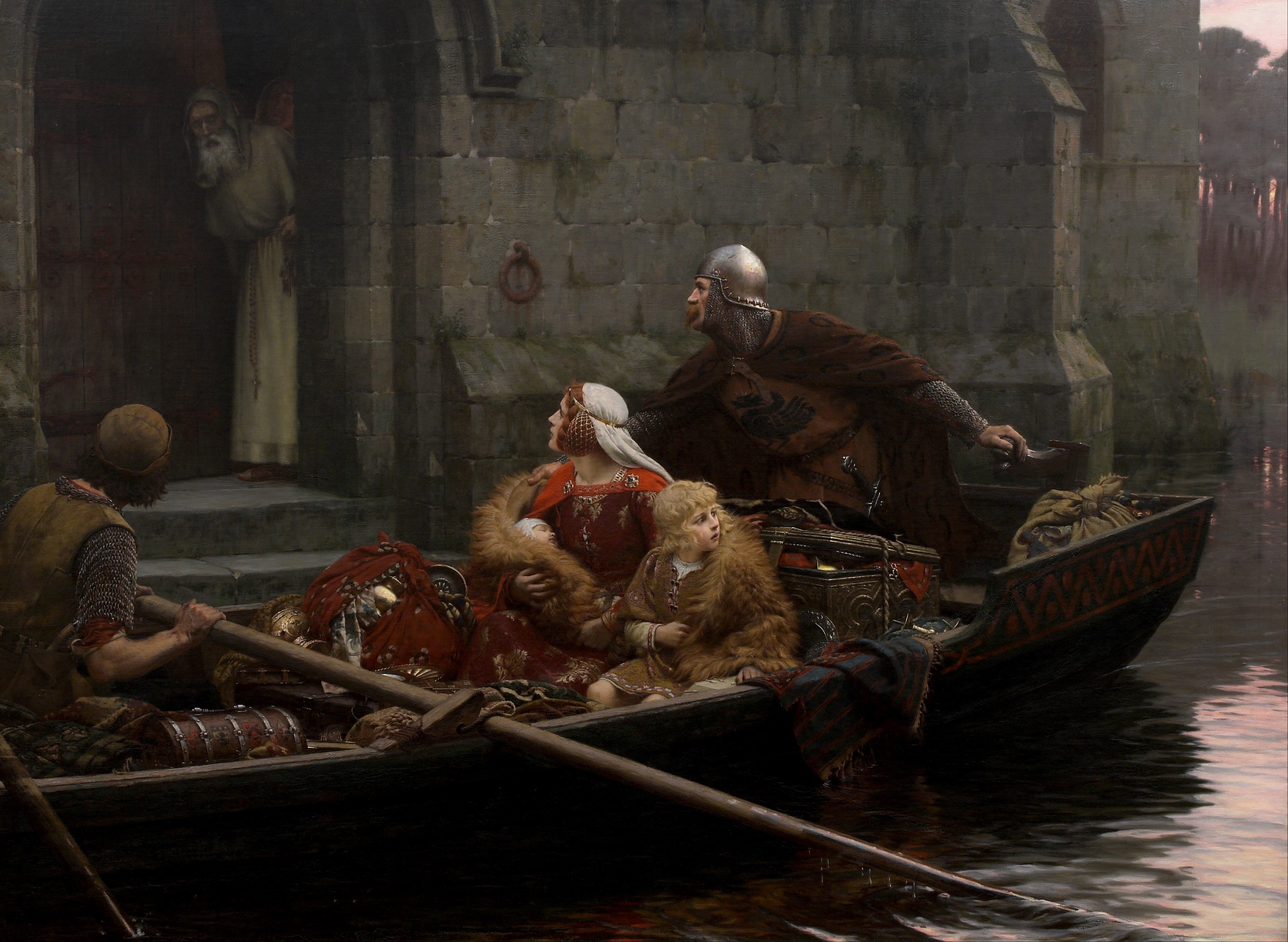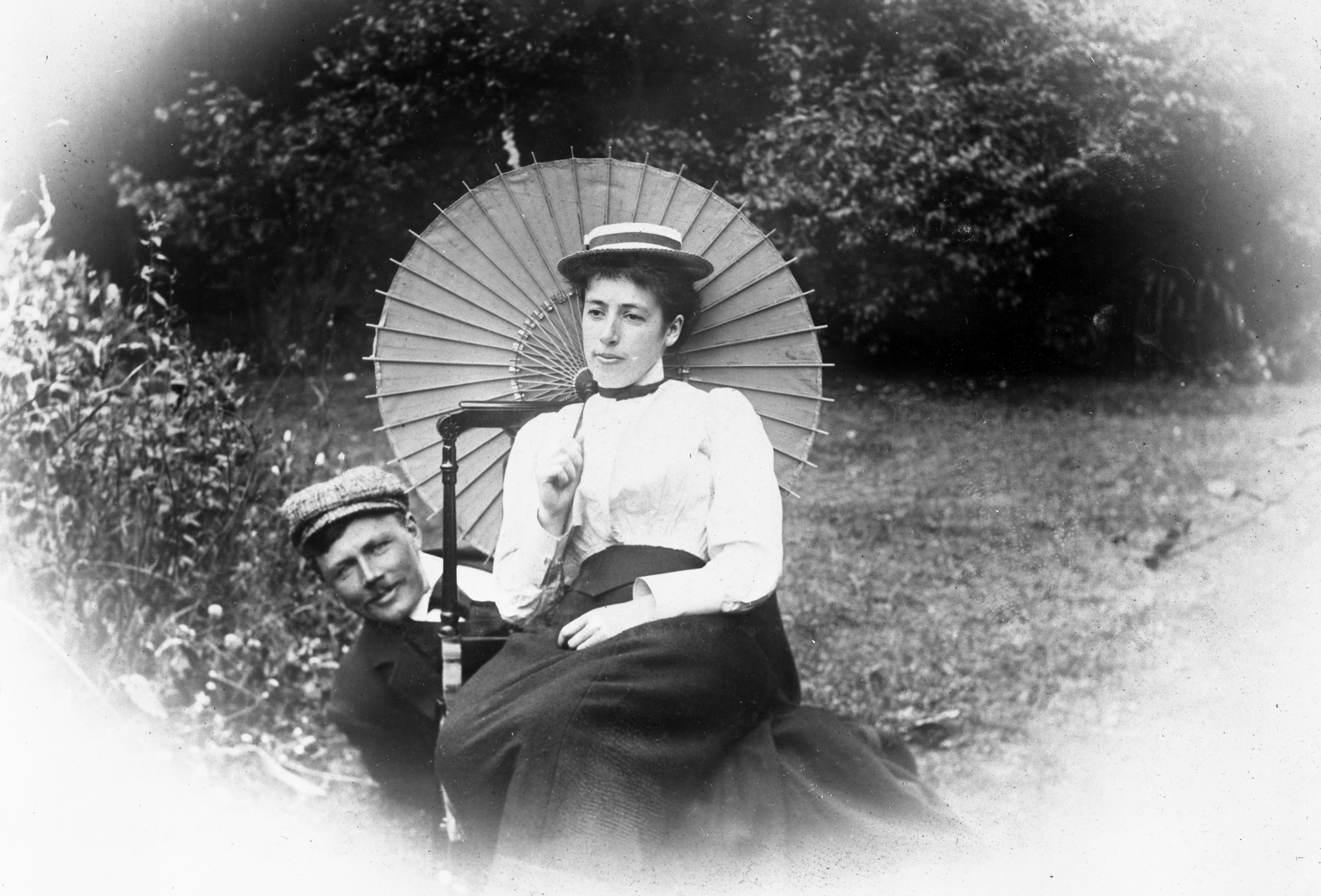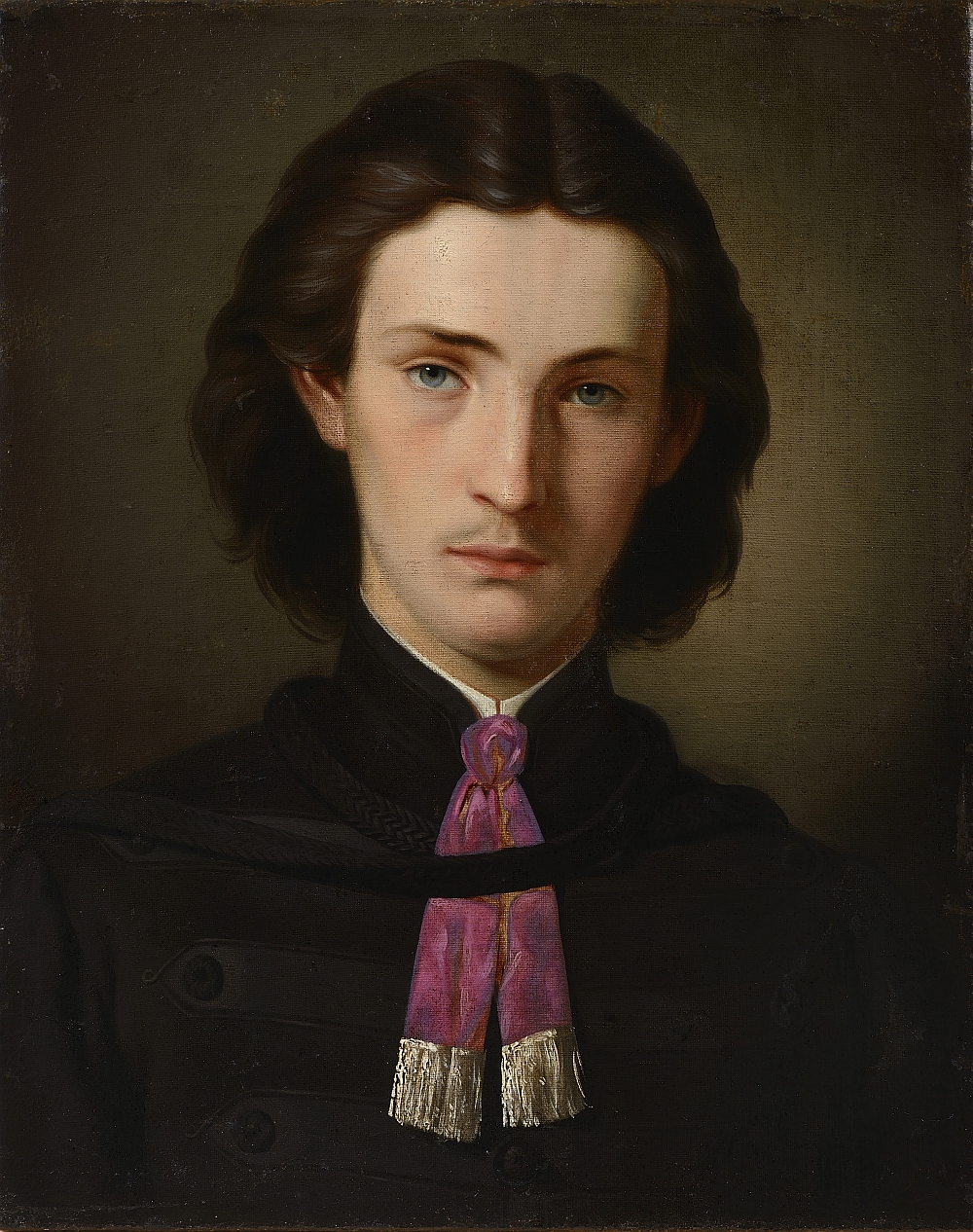|
Ellen Von Meyern
Ellen von Meyern (died c. 1912) was a New Zealand artist who is remembered for her portraits of Maori people. Life Meyern was probably the daughter of Arthur von Meyern. Around 1895, she moved from Dunedin to Auckland, where she studied portraiture at the Elam School of Art. Her work includes portraits of her sister Blanche, with whom she shared a studio, and of music and theatre celebrities. Examples of her paintings can be seen in the National Museum of New Zealand. Von Meyern's Maori paintings are, like many by Gottfried Lindauer and Frances Hodgkins, associated with symbolist portraits of demure females with or without a child. Her portrait of Prime Minister Richard Seddon is in the collection of the Auckland Art Gallery Toi o Tāmaki Auckland Art Gallery Toi o Tāmaki is the principal public gallery in Auckland, New Zealand. It has the most extensive collection of national and international art in New Zealand and frequently hosts travelling international exhibitions. ... [...More Info...] [...Related Items...] OR: [Wikipedia] [Google] [Baidu] |
Richard Seddon
Richard John Seddon (22 June 1845 – 10 June 1906) was a New Zealand politician who served as the List of prime ministers of New Zealand, 15th Prime Minister of New Zealand, premier (prime minister) of New Zealand from 1893 until his death. In office for thirteen years, he is to date New Zealand's List of Prime Ministers of New Zealand by time in office, longest-serving head of government. Seddon was born in Eccleston, St Helens, Eccleston near St Helens, Merseyside, St Helens, Lancashire, in England. He arrived in New Zealand in 1866 to join an uncle in the West Coast Gold Rush, West Coast goldfields. His prominence in local politics gained him a seat in the New Zealand House of Representatives, House of Representatives in 1879. Seddon became a key member of the New Zealand Liberal Party, Liberal Party under the leadership of John Ballance, but differed from him greatly due to his Historic conservatism in New Zealand, conservativism clashing with Ballance's progressivism. Wh ... [...More Info...] [...Related Items...] OR: [Wikipedia] [Google] [Baidu] |
New Zealand Painters
New is an adjective referring to something recently made, discovered, or created. New or NEW may refer to: Music * New, singer of K-pop group The Boyz Albums and EPs * ''New'' (album), by Paul McCartney, 2013 * ''New'' (EP), by Regurgitator, 1995 Songs * "New" (Daya song), 2017 * "New" (Paul McCartney song), 2013 * "New" (No Doubt song), 1999 *"new", by Loona from '' Yves'', 2017 *"The New", by Interpol from ''Turn On the Bright Lights'', 2002 Acronyms * Net economic welfare, a proposed macroeconomic indicator * Net explosive weight, also known as net explosive quantity * Network of enlightened Women, a conservative university women's organization * Next Entertainment World, a South Korean film distribution company Identification codes * Nepal Bhasa language ISO 639 language code * New Century Financial Corporation (NYSE stock abbreviation) * Northeast Wrestling, a professional wrestling promotion in the northeastern United States Transport * New Orleans Lakefront Ai ... [...More Info...] [...Related Items...] OR: [Wikipedia] [Google] [Baidu] |
New Zealand Women Painters
New is an adjective referring to something recently made, discovered, or created. New or NEW may refer to: Music * New, singer of K-pop group The Boyz Albums and EPs * ''New'' (album), by Paul McCartney, 2013 * ''New'' (EP), by Regurgitator, 1995 Songs * "New" (Daya song), 2017 * "New" (Paul McCartney song), 2013 * "New" (No Doubt song), 1999 *"new", by Loona from '' Yves'', 2017 *"The New", by Interpol from ''Turn On the Bright Lights'', 2002 Acronyms * Net economic welfare, a proposed macroeconomic indicator * Net explosive weight, also known as net explosive quantity * Network of enlightened Women, a conservative university women's organization * Next Entertainment World, a South Korean film distribution company Identification codes * Nepal Bhasa language ISO 639 language code * New Century Financial Corporation (NYSE stock abbreviation) * Northeast Wrestling, a professional wrestling promotion in the northeastern United States Transport * New Orleans Lakefront Ai ... [...More Info...] [...Related Items...] OR: [Wikipedia] [Google] [Baidu] |
Artists From Dunedin
An artist is a person engaged in an activity related to creating art, practicing the arts, or demonstrating an art. The common usage in both everyday speech and academic discourse refers to a practitioner in the visual arts only. However, the term is also often used in the entertainment business, especially in a business context, for musicians and other performers (although less often for actors). "Artiste" (French for artist) is a variant used in English in this context, but this use has become rare. Use of the term "artist" to describe writers is valid, but less common, and mostly restricted to contexts like used in criticism. Dictionary definitions The ''Oxford English Dictionary'' defines the older broad meanings of the term "artist": * A learned person or Master of Arts. * One who pursues a practical science, traditionally medicine, astrology, alchemy, chemistry. * A follower of a pursuit in which skill comes by study or practice. * A follower of a manual art, such as a m ... [...More Info...] [...Related Items...] OR: [Wikipedia] [Google] [Baidu] |
19th-century New Zealand Women Artists
The 19th (nineteenth) century began on 1 January 1801 ( MDCCCI), and ended on 31 December 1900 ( MCM). The 19th century was the ninth century of the 2nd millennium. The 19th century was characterized by vast social upheaval. Slavery was abolished in much of Europe and the Americas. The First Industrial Revolution, though it began in the late 18th century, expanding beyond its British homeland for the first time during this century, particularly remaking the economies and societies of the Low Countries, the Rhineland, Northern Italy, and the Northeastern United States. A few decades later, the Second Industrial Revolution led to ever more massive urbanization and much higher levels of productivity, profit, and prosperity, a pattern that continued into the 20th century. The Islamic gunpowder empires fell into decline and European imperialism brought much of South Asia, Southeast Asia, and almost all of Africa under colonial rule. It was also marked by the collapse of the large S ... [...More Info...] [...Related Items...] OR: [Wikipedia] [Google] [Baidu] |
1912 Deaths
Year 191 ( CXCI) was a common year starting on Friday (link will display the full calendar) of the Julian calendar. At the time, it was known as the Year of the Consulship of Apronianus and Bradua (or, less frequently, year 944 ''Ab urbe condita''). The denomination 191 for this year has been used since the early medieval period, when the Anno Domini calendar era became the prevalent method in Europe for naming years. Events By place Parthia * King Vologases IV of Parthia dies after a 44-year reign, and is succeeded by his son Vologases V. China * A coalition of Chinese warlords from the east of Hangu Pass launches a punitive campaign against the warlord Dong Zhuo, who seized control of the central government in 189, and held the figurehead Emperor Xian hostage. After suffering some defeats against the coalition forces, Dong Zhuo forcefully relocates the imperial capital from Luoyang to Chang'an. Before leaving, Dong Zhuo orders his troops to loot the tombs of the H ... [...More Info...] [...Related Items...] OR: [Wikipedia] [Google] [Baidu] |
Auckland Art Gallery Toi O Tāmaki
Auckland Art Gallery Toi o Tāmaki is the principal public gallery in Auckland, New Zealand. It has the most extensive collection of national and international art in New Zealand and frequently hosts travelling international exhibitions. Set below the hilltop Albert Park, Auckland, Albert Park in the central-city area of Auckland, the gallery was established in 1888 as the first permanent art gallery in New Zealand. The building originally housed both the Auckland Art Gallery and the Auckland public library, and opened with collections donated by benefactors Governor Sir George Grey and James Tannock Mackelvie. This was the second public art gallery in New Zealand, after the Dunedin Public Art Gallery, which opened three years earlier in 1884. Wellington's New Zealand Academy of Fine Arts opened in 1892 and a Wellington Public Library in 1893. In 2009, it was announced that the museum received a donation from American businessman Julian Robertson, valued at over $100 milli ... [...More Info...] [...Related Items...] OR: [Wikipedia] [Google] [Baidu] |
Frances Hodgkins
Frances Mary Hodgkins (28 April 1869 – 13 May 1947) was a New Zealand painter chiefly of landscape and still life, and for a short period was a designer of textiles. She was born and raised in New Zealand, but spent most of her working life in England. She is considered one of New Zealand's most prestigious and influential painters, although it is the work from her life in Europe, rather than her home country, on which her reputation rests. Early life and education Hodgkins was born in Dunedin, New Zealand in 1869, the daughter of Rachel Owen Parker and W. M. Hodgkins, a lawyer, amateur painter, and a leading figure in the city's art circles. As a girl she and her sister, Isabel Field, Isabel (later Field) attended Braemar House, a private girls' secondary school; both sisters demonstrated artistic talent early on and each became a successful landscape painter in her own right. Hodgkins first exhibited rural genre scenes and portraits in 1890 at art societies in Christch ... [...More Info...] [...Related Items...] OR: [Wikipedia] [Google] [Baidu] |
Māori People
The Māori (, ) are the indigenous Polynesian people of mainland New Zealand (). Māori originated with settlers from East Polynesia, who arrived in New Zealand in several waves of canoe voyages between roughly 1320 and 1350. Over several centuries in isolation, these settlers developed their own distinctive culture, whose language, mythology, crafts, and performing arts evolved independently from those of other eastern Polynesian cultures. Some early Māori moved to the Chatham Islands, where their descendants became New Zealand's other indigenous Polynesian ethnic group, the Moriori. Initial contact between Māori and Europeans, starting in the 18th century, ranged from beneficial trade to lethal violence; Māori actively adopted many technologies from the newcomers. With the signing of the Treaty of Waitangi in 1840, the two cultures coexisted for a generation. Rising tensions over disputed land sales led to conflict in the 1860s, and massive land confiscations, to which ... [...More Info...] [...Related Items...] OR: [Wikipedia] [Google] [Baidu] |
Gottfried Lindauer
Gottfried Lindauer (5 January 1839 – 13 June 1926) was a Bohemian and New Zealand artist famous for his portraits, including many of Māori people. Czech life and Austrian school He was born Bohumír Lindauer in Plzeň (Pilsen), Western Bohemia, Austrian Empire (now part of the Czech Republic). His father, Ignatz Lindauer was a gardener. His first drawing experience was plants and trees. From 1855 Lindauer studied at the Academy of Fine Arts in Vienna, where he took classes of Leopold Kupelwieser, Josef Führich and Professor Rohl. To increase his chances on the market, he decided to change his name from the Czech Bohumír to the German translation of his name, "Gottfried". From his studio in Pilsen he created paintings with religious themes for churches and painting frescoes in the Cathedral churches of Austria. His paintings attracted people, particularly the prominent people who were often the subjects of his paintings, including Bishop Jieschek, of Budweis, in Bohemia. ... [...More Info...] [...Related Items...] OR: [Wikipedia] [Google] [Baidu] |
Museum Of New Zealand Te Papa Tongarewa
The Museum of New Zealand Te Papa Tongarewa is New Zealand's national museum and is located in Wellington. ''Te Papa Tongarewa'' translates literally to "container of treasures" or in full "container of treasured things and people that spring from mother Earth here in New Zealand". Usually known as Te Papa (Māori for "the treasure box"), it opened in 1998 after the merging of the National Museum of New Zealand and the National Art Gallery. An average of more than 1.5 million people visit every year, making it the 17th-most-visited art gallery in the world. Te Papa's philosophy emphasises the living face behind its cultural treasures, many of which retain deep ancestral links to the indigenous Māori people. History Colonial Museum The first predecessor to Te Papa was the ''Colonial Museum'', founded in 1865, with Sir James Hector as founding director. The Museum was built on Museum Street, roughly in the location of the present day Defence House Office Building. The muse ... [...More Info...] [...Related Items...] OR: [Wikipedia] [Google] [Baidu] |
